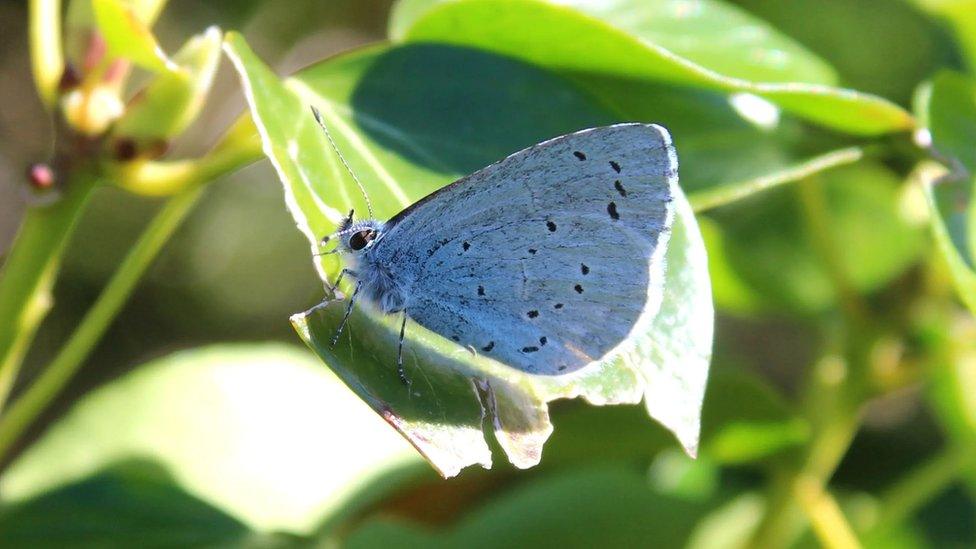Big Butterfly Count: NI public urged join tracking efforts
- Published
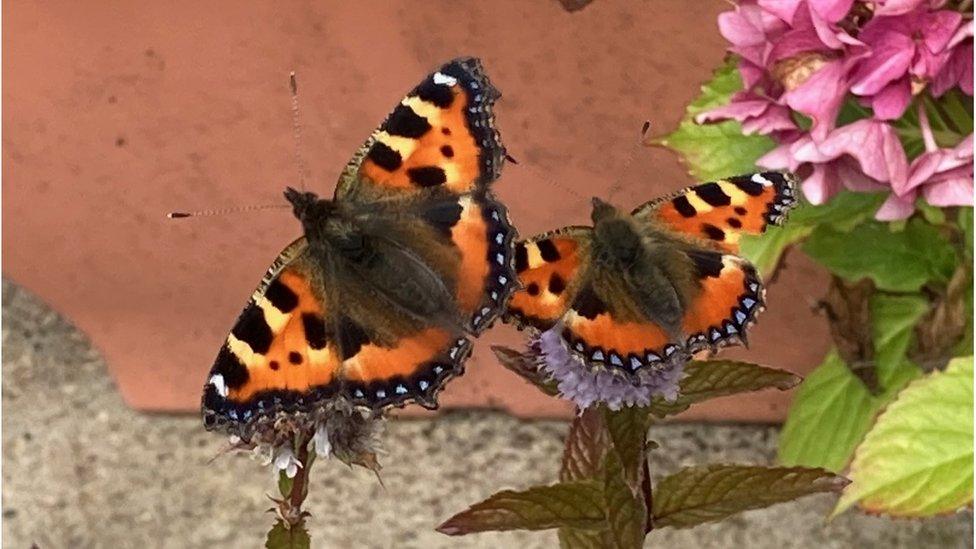
People in Northern Ireland are being urged to join the Big Butterfly Count to see how the insects are faring.
The count is regarded as the biggest natural history citizen science project in the world.
Participants count how many butterflies they see in a fifteen-minute period and upload their results online, especially if they do not see any.
Last year, more than 1,200 counts were recorded in Northern Ireland, with almost 100,000 counts across the UK.
Butterflies under threat
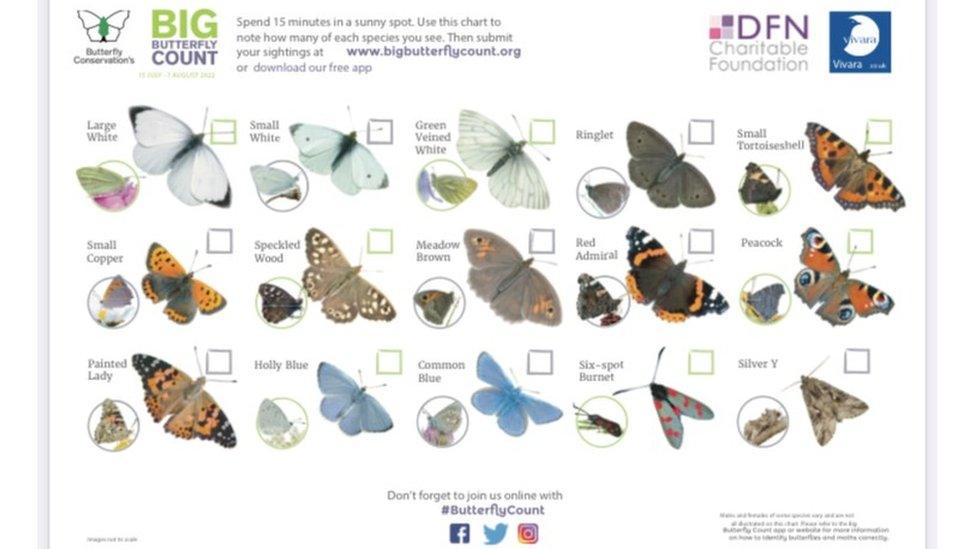
Extreme weather threatens butterflies with extinction or near extiction in the UK
Butterflies are seen as an important barometer for climate change as they react to changing weather patterns.
In last year's count, some species of butterflies had almost halved in Northern Ireland.
The number of butterflies has declined in the UK by 80% since the 1970s.
Half of the butterfly species in the UK are threatened or near threatened with extinction due to extreme weather.
That is because extreme weather affects the food available to the insects before the crucial pupation stage, when they form a chrysalis and transform into butterflies.
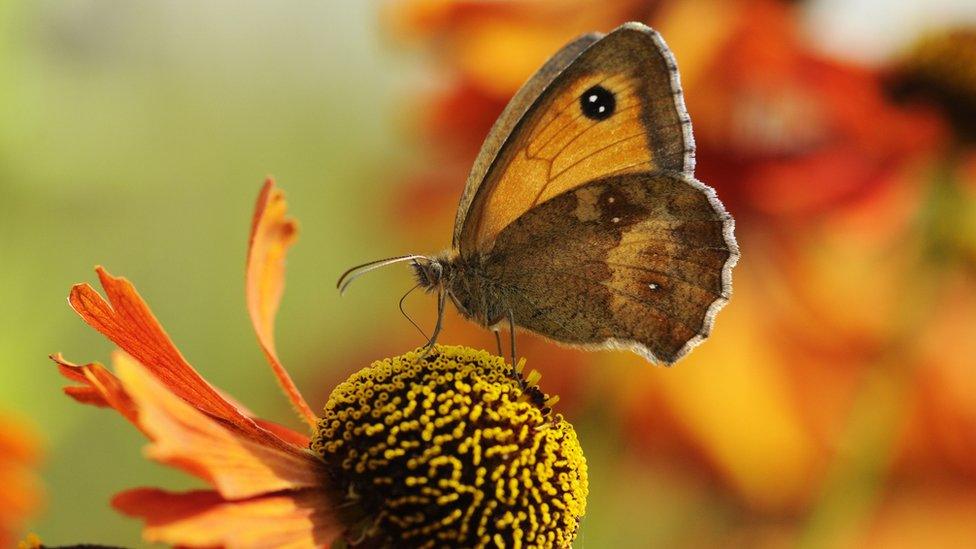
The counts can be carried out in garden, parks or anywhere outdoors
Northern Ireland has seen extreme weather this year, from heavy rain to bouts of drought.
Rosemary Mulholland, the Northern Ireland branch chair of the Butterfly Conservation charity, said the weather has caused plants to wither, which does not help the insect.
"Butterfly caterpillars will eat plants, so if those plants are withering in the drought, for example, that can really affect the numbers.
"We really want to know what's going on, this year in particular, following the recent extreme weather events," she added.
She said day-flying moths are also part of the count and people can do as many counts as they want to.
They can be carried out in gardens, parks or anywhere outdoors and instructions can be found on the website.
Results can be added online, external or via the Big Butterfly Count app.
The count continues until 6 August.
Related topics
- Published16 July 2023
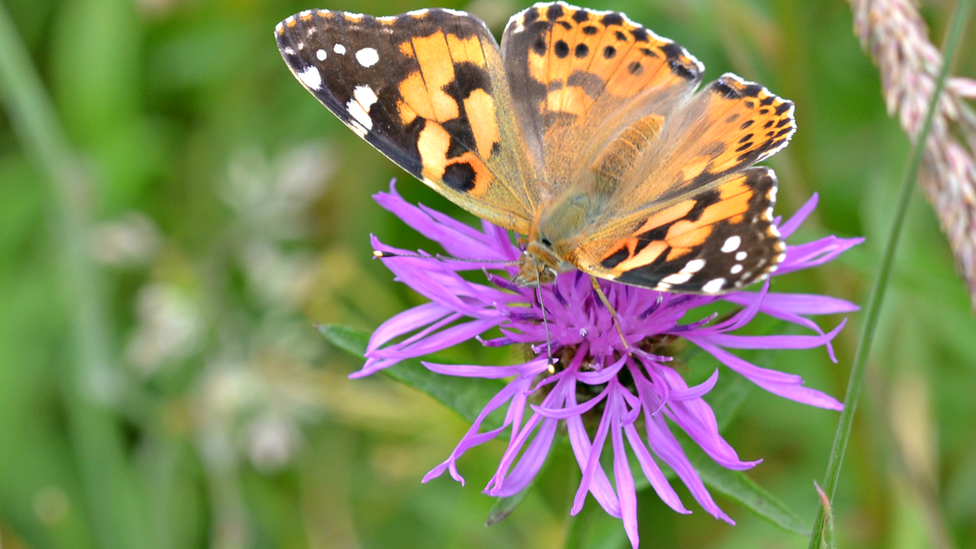
- Published3 February 2023
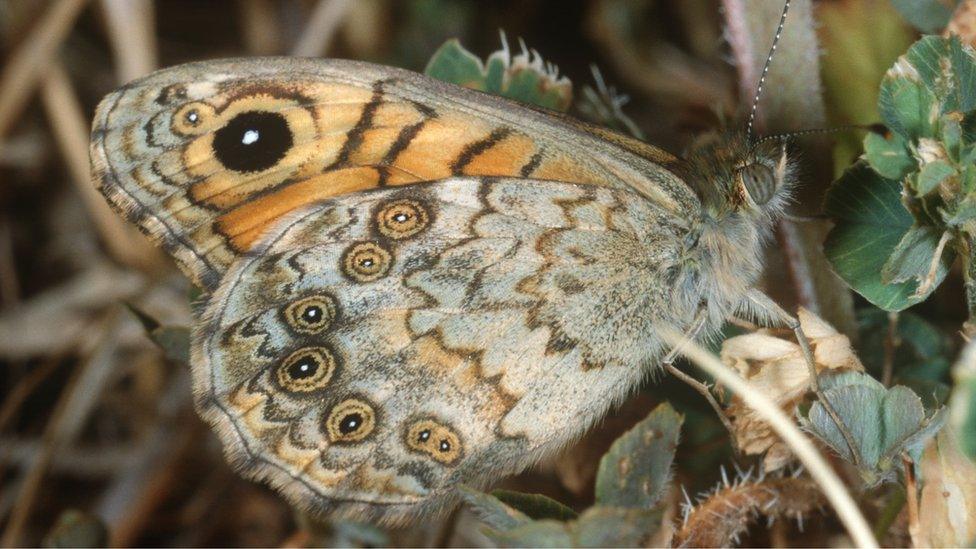
- Published20 October 2022
